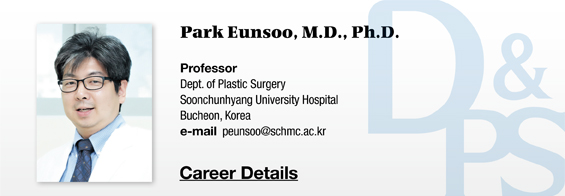1) Extracellular Factors
The micro environment that stem cells are exposed to has a very important influence. Extracellular environment includes extracellular matrix consisting of structural proteins secreted from cells, hormones, growth factors, electrolytes, gaseous materials and various other micro components dissolved in the extracellular fluid or body fluid, and direct interactions with adjacent cells, etc.
2) Intracellular Factors
Mature cells with completed differentiation have a series of gene expression patterns that specify their properties. Cell differentiation signifies that the overall gene expression of a cell take on a new pattern. This change in gene expression is influenced by various factors and their interactions, which determine which genes are expressed and not expressed.
It is important to be able to control the degree of expression of certain genes. Factors involved in gene expression mostly are triggered by external stimuli. Although it is difficult to consider internal factors separately from external factors, it is important to consider internal properties of cells can lead to different responses to the same external stimuli. In this light, intracellular factors influencing cell differentiation can include transcription factors and other regulators of gene expression, microRNA, epigenetic factor, receptors and intracellular messengers, etc.
HELIOSⅡ/LOTUSⅡ/HYPERION – Manufacturer: LASEROPTEK(www.laseroptek.com)
Understanding the Role of Extracellular Matrix
Extracellular matrix refers to the structure composed of connective tissues that exist outside animal calls. Extracellular matrix is involved in various functions including cellular support. Among extracellular matrix, intercellular substances refer to all substances filling the space between cells and is in the gel form consisting of polysaccharides, and fibrous proteins. Intercellular substances mainly have the function of relieving the pressure of external physical stress and carry out various functions based on its varied components.
Extracellular matrix is also involved in the intercellular messenger system and control cell dynamics. Extracellular matrix, itself, is important but its various components including growth factors and cell function regulators also have indirect impact on stem cell differentiation. Formation of extracellular matrix plays an important role in growth, wound healing, and fibrosis. Division, differentiation and migration of stem cells are also influenced by various components of extracellular matrix adjacent to the stem cells.
In the subventricular zone, where fetal neural stem cells exist, it is evident that extracellular matrix plays a central role in stem cell regulation. The body and short branches of neural progenitor cells exist in areas without the basement membrane. This area consists of various cytosol components such as lamins, betal integrin, tenascin-C and chondroitin sulfate proteoglycan, etc. Anomalies in these cytosol components can impair stem cell division and differentiation, as well as migration.
The integrin family, a large part of extracellular matrix, is heterodimeric transmembrane receptor consisting of α and β subunits and is expressed in many stem cells. Besides integrin, integrin associated proteins are also found to have high levels of expressions in stem cells.
Integrin is known to be primarily involved in cell adhesion and signal transmission. Integrin’s role in cell adhesion take the form of bonding extracellular matrix proteins and intracellular actin cytoskeleton. Integrin is known to bond with a wide variety of extracellular matrix proteins and its affinity to extracellular matrix is determined by α and β subunit combination.
At the cell membrane, integrin combines with integrin-binding protein, scaffolding protein, actin-binding protein and cell-signaling proteins. Integrin’s action of connecting the outside to inside of cells enable cell adhesion as well as signal transmission. That is, by transmitting extracellular signals, integrin helps induce cell responses related to cell differentiation, proliferation and survival.
In certain cases, intracellular signals can be transmitted through integrin to change the extracellular environment. In other words, integrin allows bidirectional signal transmission, making it a key regulator of stem cells. In summary, integrin has been found to have the following impact on stem cell regulation; stem cell homing, settlement of stem cells through cell aggregation via integrin, regulating cell division through intercellular signal transmission, and regulating nonsymmetrical cell division. Recently, integrin’s role in tumor stem cells has been discovered.
-To be continued-





















